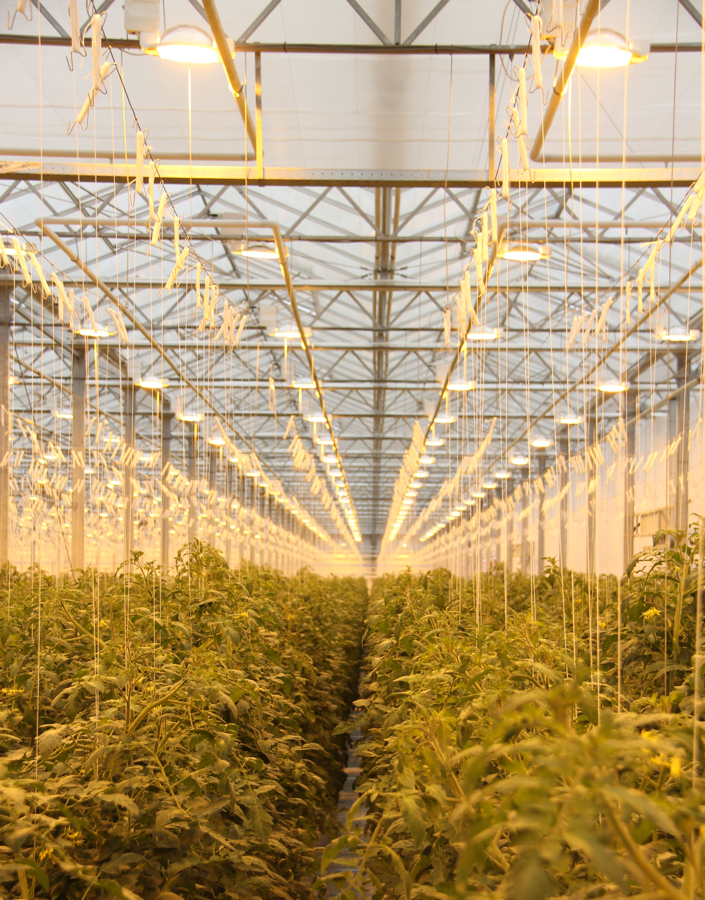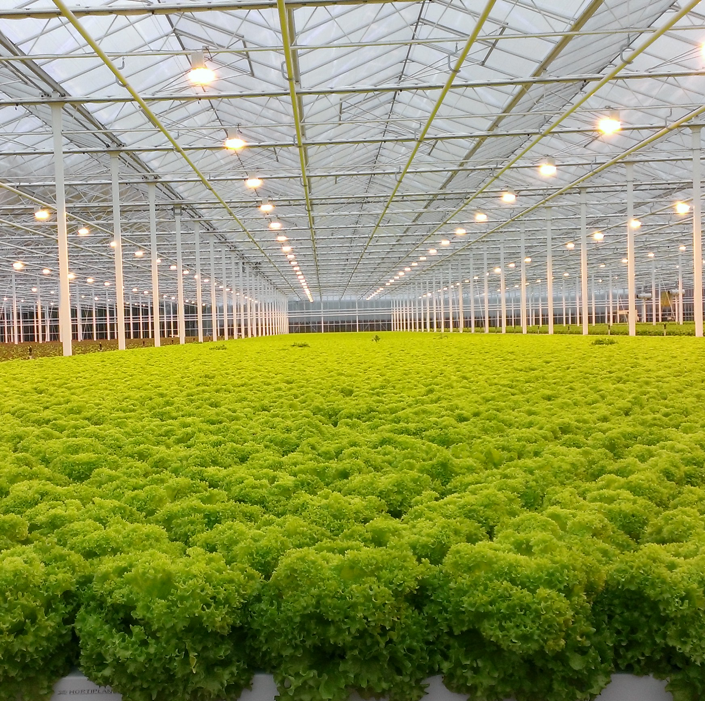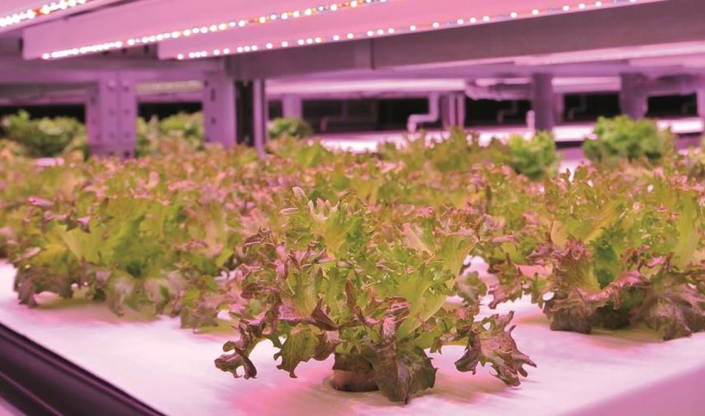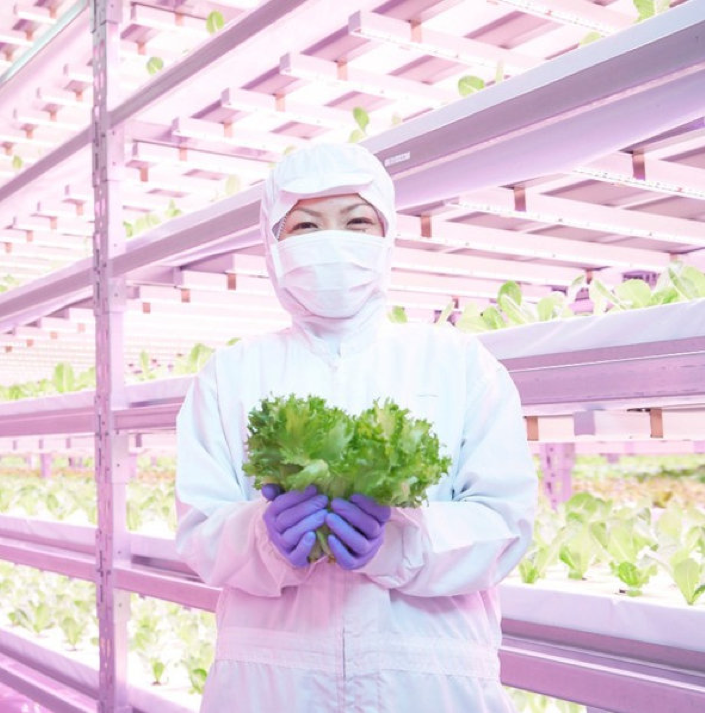

Various types of lamps are available, including high-pressure sodium, LED, metal halide, fluorescent, incandescent, and high-pressure mercury lamps. The choice of lamps and their wattage depends on the greenhouse's height and the specific crop being grown.
We will focus in more detail on two types of lamps: LED lamps and high-pressure sodium lamps, as they are primarily used for cultivation.
Prior to delving into artificial lighting choices, it's essential to grasp how light influences plant growth.
Humans and plants have different ways of perceiving light. The human eye detects electromagnetic radiation in the range of 380-780 nm. In contrast, plants only utilize a specific part of this spectrum, which falls between 400-700 nm, for photosynthesis.
This range is referred to as Photosynthetically Active Radiation (PAR) and is measured in micromoles per second (µmol/s). Other units of measurement like Watts per square meter (W/m²) or lux do not accurately represent the amount of light consumed by a plant.
Metrics like joules or watts are typically used for measuring power consumption among other things. But for agronomists, what's critical is µmol/s. Given that different lighting brands produce different light outputs, lamps of the same power might still offer varying amounts of light that a plant can absorb.
You can measure the light intensity using a specific instrument called the P.A.R. sensor, which quantifies it in µmol/s.
Check availavility of P.A.R. sensorOften asked is, "How much light do you need?" The response is clear:
The greater the light, the larger the harvest.
It's guided by the principle: a 1% boost in light results in a 1% rise in yield.
CONTACT NOWThe rate of growth and development of plants is affected by two main factors: the combined power output of the lights installed in the greenhouse and their spectral composition.
Depending on the intensity of certain emitted colors (like yellow, green, or blue), it's possible to promote different vegetative growth stages in plants.
It's crucial to highlight that while most plants can't have too much light, there is indeed a minimum amount they need, and this varies across different species.
Nowadays, more and more contemporary greenhouse farms are adopting LED lighting. Moreover, a growing number of existing greenhouses are shifting from high-pressure sodium (HPS) lamps to LED fixtures.
The main driver behind this shift is the marked rise in energy prices, particularly for electricity. Consequently, many farms find it advantageous to transition their entire supplemental lighting system to LEDs and then sell their HPS fixtures on the secondary market to emerging nations.
Advantages of HPS compared to LED fixtures
Firstly, the price. Today, the cost of HPS lamps is the primary factor when choosing between them and LED lights.
Secondly, a broad emission spectrum. These lamps have a universal spectral composition and are suitable for any plant. For instance, the same fixtures are used for roses, tomatoes, cucumbers, or herbs.
Thirdly, new HPS lamps have a high energy efficiency.
Fourthly, the advantage for coler climates is the emitted heat. Depending on the lighting intensity, the lamps produce between 3°C to 15°C of heat when turned on. This advantage allows for significant heating cost reductions. It's a benefit for all countries where winters are dark and cold.
Globally, there are only a few manufacturers of greenhouse bulbs that are installed in fixtures with a light-reflecting reflector. The two leading producers of greenhouse bulbs are Philips and Osram. The available lamp power options are: 250W, 400W, 600W, 750W, and 1000W.
250W and 400W fixtures are mainly used for interlight growing while 400W, 600W, 750W and especially 1000W for traditional upper lighting installation.
Dasadvantages of HPS compared to LED fixtures
Firstly, there are substantial operational expenses every 3-5 years.
It's rarely noted that HPS bulbs have a lifespan of 10,000 hours. In practical terms, this equates to around 3 years of use. After this period, the bulb's performance declines and requires replacement. The expenses related to purchasing and transporting these bulbs can considerably add to a company's operational costs.
Secondly, reflectors play a significant role, and it's important to note that manufacturers use different qualities of aluminum for their production. Additionally, these reflectors can accumulate dirt over time, requiring regular cleaning to maintain their effectiveness.
In the Netherlands, reflector cleaning services are available, facilitated by firms equipped with specialized washing machines. These machines can efficiently and delicately clean approximately 5,000 reflectors in a single day without causing any harm to their surfaces.
If an enterprise doesn't make use of such cleaning services, they usually swap out the reflectors every 5-7 years. This is because the light reflection from the reflector plays a crucial role in the overall efficiency of the lighting. Regrettably, such a service is not available in most countries at the moment.


When choosing LED lights, it's essential to recognize that each crop needs a specific light spectrum. Many manufacturers have designed general spectrums suitable for most flowers. Meanwhile, there are tailored spectrums crafted for individual types of vegetables, lettuce, and herbs.
Let's illustrate with an example: Leafy lettuce doesn't require red light. If you install a light fixture emitting red light with a ratio of, say, 100W where 10W is red, it's unnecessary for the lettuce. Those 10W represent a 10% overpayment and excess electricity consumption. Essentially, you've purchased something that doesn't aid in growth and incurs extra costs.
Hence, when buying LEDs for greenhouses, it's essential to opt for companies that specialize in designing the optimal light spectrum for the specific plants in question.
Also, consider the cooling solution offered by the supplier to ensure the lamps have a long lifespan while providing optimal light output.
In conclusion: The use of artificial lighting through a supplemental system enables...
to achieve high yields
the capability to secure the expected harvest irrespective of climatic conditions
to improve the product's quality
the capability for continuous growing cycles
It's the supplemental lighting system that allows for year-round crop production
CONTACT NOWKey difference between LED and HPS:
While LEDs might cost 2-3 times more than HPS, the expenses related to transformers and grid connectivity get reduced by around half. Conversely, HPS provides the versatility to grow any type of plant, granting adaptability in crop selection.
Supplementary illumination is among the most rapidly evolving fields. With every passing month, an increasing number of growth tests and measurement outcomes are revealed.